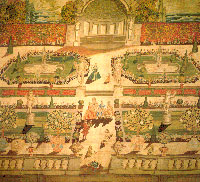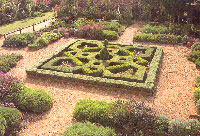|
Hobhouse, 1992 |
|
Gardens became an allegory for the Queen Elizabeth, the white eglantine rose personified. In fact, many of the aristocrats had gardens built for when she might visit their homes. The most prominent of the Elizabethan gardens are those of the houses Kenilworth, Theobald, Wollaton, Wimbledon, and Nonsuch. Unfortunately, these gardens do not exist in the same designs today and there is little extant information on any actual Elizabethan gardens other than travel diaries from the period or tapestries like the one to the left. |
|
|
|
|
|
|


